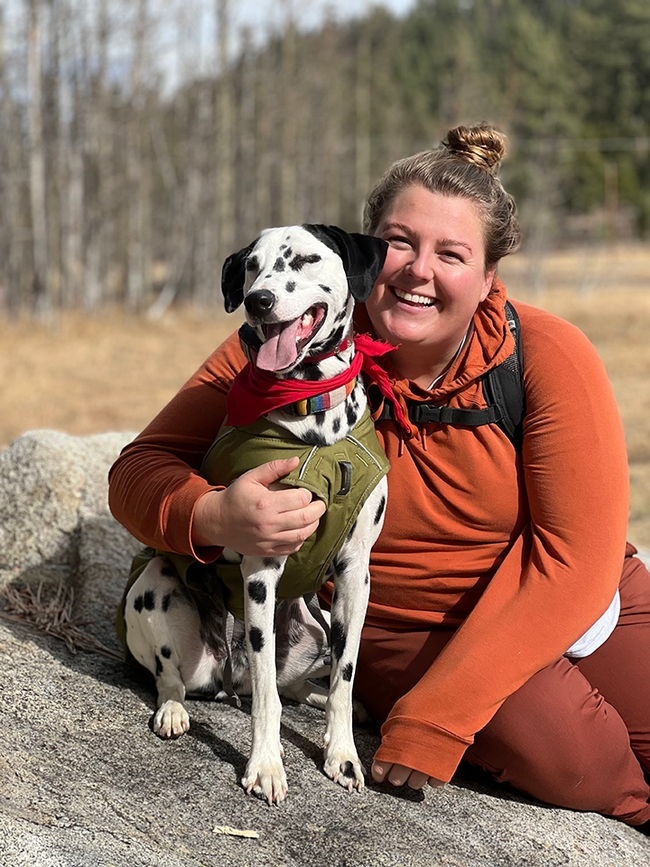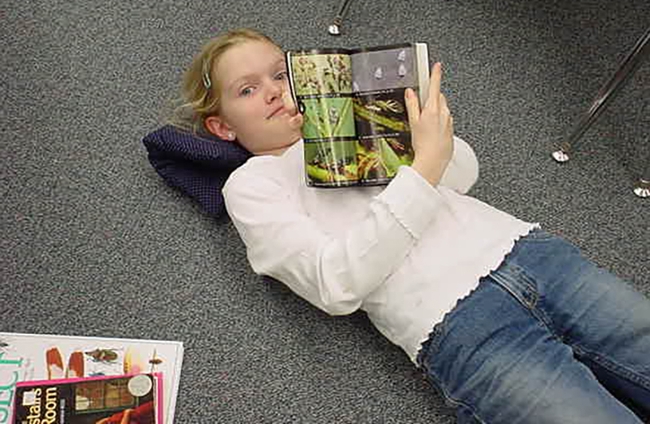- Author: Kathy Keatley Garvey
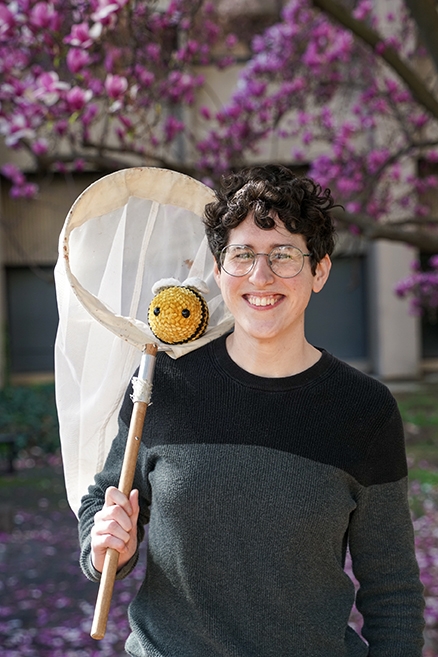
Rukowski, who studies with community ecologists Rachel Vannette, associate professor and vice chair of the UC Davis Department of Entomology and Nematology, and distinguished professor Rick Karban, will present her exit seminar on "Identity and Functions of Symbiotic Fungi Associated with Social Bees" on Monday, May 20.
Her hour-long seminar starts at 4:10 p.m. in Room 122 of Briggs Hall. It also will be on Zoom. The Zoom link:
https://ucdavis.zoom.us/j/9 5882849672.
"Social bees interact with diverse microbial communities that reside in flowers, in their nests, and within their guts," Rutkowski says in her abstract. "Fungi are common inhabitants of these environments, but despite their prevalence, little is known about their interactions with bees and their impacts on bee health. In my thesis, I identified common fungal associates of social bees and investigated their effects on bumble bee health, specifically focusing on their roles in bee response to fungicide, bee nutrition, and protection from pathogens."
"I identified several yeast groups frequently associated with social bees, including the genera Starmerella and Zygosaccharomyces," she relates. "Addition of these yeasts to bee diets improved survival and reproduction, and for one species, helped bees recover from negative effects of fungicide exposure. However, a follow-up study determined that these benefits to bee health are inconsistent and unrelated to bee nutrition. Rather, benefits of these yeasts instead may be mediated through pathogen suppression, as Starmerella yeasts are able to inhibit the growth of multiple fungal pathogens of bees. These results highlight the important impacts of these currently understudied microbes on bumble bee health, with implications for conservation of these pollinators."
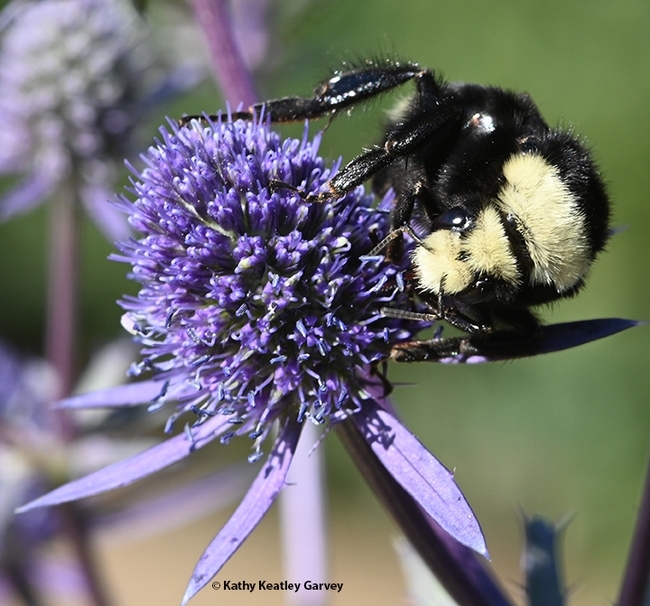
In her 2021 ESA presentation, she drew attention to fungicide applications that are linked to declining bumble bee populations. She wrote in her abstract: "Native bees including bumble bees are important pollinators but face threats from multiple sources, including agrochemical application. Declining bumble bee populations have been linked to fungicide application, which could directly affect the fungi often found in the stored food and GI tract of healthy bumble bees. Here, we test the hypothesis that fungicides impact bee health by disrupting bumble bee -fungi interactions. Using two species, Bombus vosnesenskii and B. impatiens, we test the interactive effect of the fungicide propiconazole and fungal supplementation on the survival, reproduction, and microbiome composition of microcolonies (queenless colonies). We found that both bee species benefitted from fungi, but were differentially affected by fungicides. In B. vosnesenskii, fungicide exposure decreased survival while fungal supplementation mitigated fungicide effects. For B. impatiens, fungicide application had no effect, but fungal supplementation improved survival and offspring production. Fungicides altered fungal microbiome composition in both species, and reduced fungal abundance in B. vosnesenskii microcolonies, but not in B. impatiens, where instead fungal addition actually decreased fungal abundance. Our results highlight species-specific differences in both response to fungicides and the nature of fungal associations with bees, and caution the use of results obtained using one species to predict the responses of other species. These results suggest that fungicides can alter bee- fungi interactions with consequences for bee survival and reproduction, and suggest that exploring the mechanisms of such interactions, including interactions within bee-associated fungal communities, may offer insights into bumble bee biology and bumble bee conservation strategies."
Her many activities include:
- A 2023 graduate of The Bee Course, a 10-day workshop on bee collection and identification at the Southwestern Research Station in Portal, AZ.
- Co-chair of the department's entomological activities, 2022 UC Davis Picnic Day, with forensic entomologist Robert Kimsey.
- As a member of the UC Davis graduate student group, Equity in Science, Technology, Engineering, Math, and Entrepreneurship (ESTEME), she helped plan activities and lessons for middle school students in the Davis area.
- Former secretary and vice president of the UC Davis Entomology Graduate Student Association.
- Mentored prospective graduate students from groups underrepresented in STEM through a month-long program, and provided application advice and feedback on application materials.
Rutkowski holds a bachelor of science degree from Cornell University in entomology and biological sciences, with a concentration in ecology and evolutionary biology. She graduated in May 2018 summa cum laude with distinction in research.
At Cornell, Rutkowski did independent research with Professor Jennifer Thaler, carrying out an independent honor's thesis research project on ecological interactions between insect herbivores, plants, and arbuscular mycorrhizal fungi. Rutkowski also worked with Thaler on numerous other projects, studying interactions between potato plants, Colorado potato beetles, and their predators, as well as projects studying the interactions between arbuscular mycorrhizal fungi, tomato plants, and insect herbivores. She also worked with Professor Richard Lindroth at the University of Wisconsin, Madison, investigating how genotype and environmental conditions interact to affect the growth, defense and insect community of aspen trees.
Rutkowsk is the lead author or co-author in a number of publications:
- Rutkowski, D., Weston, M., Vannette, R.L. (2023) Bees just wanna have fungi: A review of bee associations with non-pathogenic fungi. FEMS Microbiology Ecology 99(8) https://doi.org/10.1093/femsec/fiad077
- Karban, R., Rutkowski, D., Murray, N. (2023) Flowers that self?shade reduce heat stress and pollen limitation. American Journal of Botany 110(2) https://doi.org/10.1002/ajb2.16109
- Pepi, A., Pan, V., Rutkowski, D., Mase, V., Karban, R. (2022) Influence of delayed density and ultraviolet radiation on caterpillar baculovirus infection and mortality. Journal of Animal Ecology 91(11):2192-2202 https://doi.org/10.1111/1365-2656.13803
- Rutkowski, D., Litsey, E., Maalouf, I, Vannette, R.L. (2022) Bee-associated fungi mediate effects of fungicides on bumble bees. Ecological Entomology 47(3):411-422 https://doi.org/10.1111/een.13126
- Mola, J.M., Stuligross, C., Page, M.L., Rutkowski, D., Williams, N.M. Impact of “non-lethal” tarsal clipping on bumble bees (Bombus vosnesenskii) may depend on queen stage and worker size. Journal of Insect Conservation 25, 195–201 (2021). https://doi.org/10.1007/s10841-021-00297-9
The UC Davis Department of Entomology and Nematology seminars are coordinated Brian Johnson, associate professor. For any technical issues with Zoom, contact him at brnjohnson@ucdavis.edu. The full list of spring seminars is here.
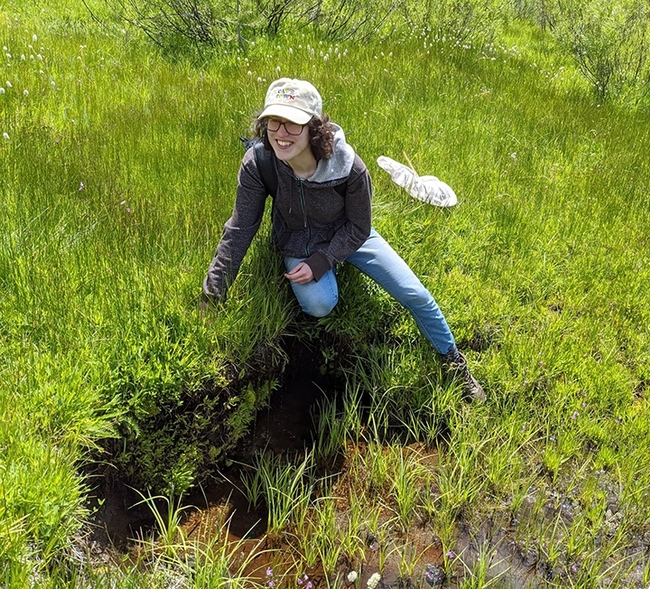
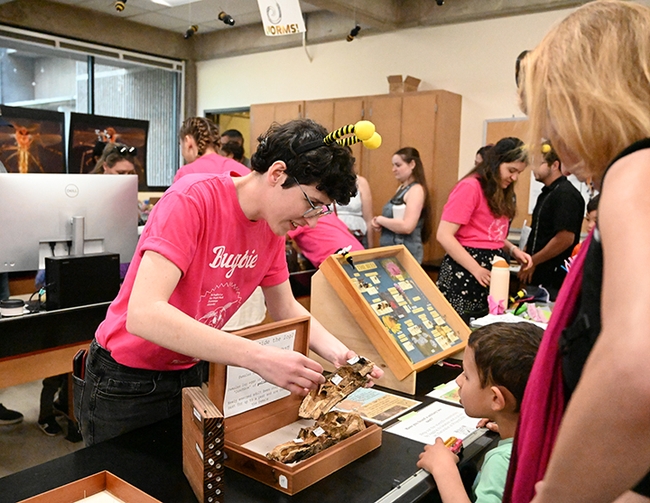
- Author: Kathy Keatley Garvey
Jill Oberski is in the third grade, stretched out on the classroom floor reading her "Audubon Field Guide to Insects and Spiders of North America." Another insect publication is within reach.
Fast forward to today: she's Dr. Jill Oberski.
She just completed her doctoral dissertation, studying with major professor Phil Ward, ant specialist and professor, UC Davis Department of Entomology and Nematology. She will present her exit seminar on "Phylogenetics and Biogeography of the Pyramid Ants" at 4:10 p.m., Wednesday, June 7 in 122 Briggs Hall The seminar also will be on Zoom.
"I've been fascinated by insects as long as I can remember," Jill said. "As a kid, I learned the names of the major taxonomic orders and created a small pinned collection, but I didn't realize it could be anything more than a hobby, so I shifted my sights toward becoming a medical doctor. But when I went to college, I met a professor who actually does study biodiversity and discover new arthropod species for a living. So after getting my start in research at Macalester College, and a year as an intern at University of Wisconsin-Madison, I started searching for suitable research programs across the country where I could train as a grad student doing those same things—biodiversity, evolution, and biogeography of insects or arachnids."
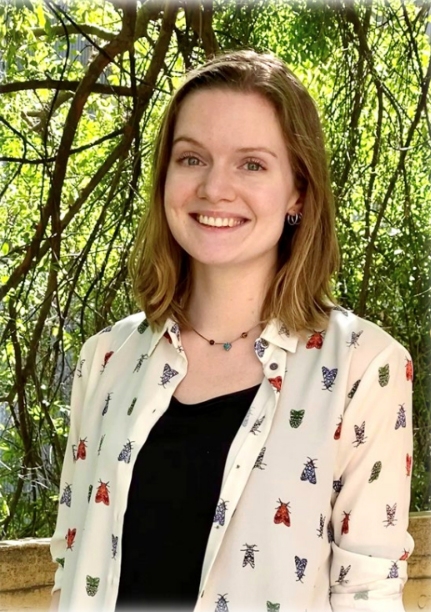
So, on June 7, she'll discuss her five-year research. "Ants of the genus Dorymyrmex, the 'pyramid ants,' exhibit an intriguing distribution that is most concentrated not near the equator, but instead in dry temperate regions of the Americas, such as deserts, shrublands, and beaches, and including Davis, California," Oberski writes in her abstract. "Although these ants are common, widespread, and ecologically significant, their diversity and evolutionary history are still poorly understood. My dissertation research introduces Dorymyrmex to modern phylogenomics and concerted biogeographic study by integrating classic and cutting-edge approaches: I performed targeted genomics with UCEs, inferred Bayesian phylogenies and fossil-calibrated divergence dates, and also employed traditional methods like morphometrics and visual species description."
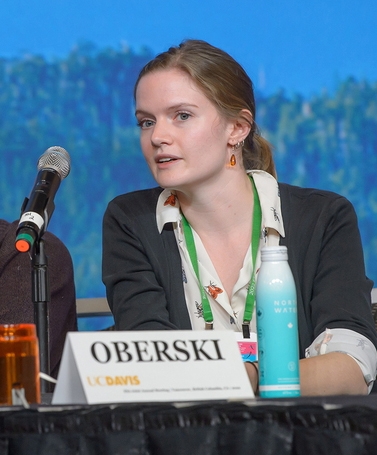
Jill, who joined the Ward lab in 2017, received a bachelor's degree in biology and a bachelor's degree in German studies, sum laude, from Malacaster College, Saint Paul, Minn. Fluent in German, she completed a 2014 summer course, "Anatomie, Physiologie, und Evolution der Tiere" (Anatomy, Physiology, and Evolution of the Animals) at Universität Wien, Vienna, Austria.
Since enrolling in the UC Davis graduate program, Jill has been more active than the ants she studies! She's a past president of the UC Davis Entomology Graduate Student Association, and served in leadership roles in the Girls' Outdoor Adventure in Leadership and Science (GOALS).
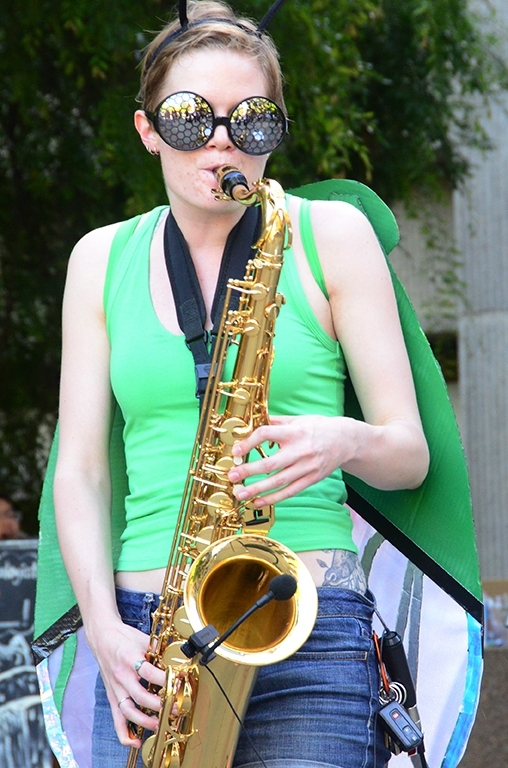
She received a five-year Dean's Distinguished Graduate Fellowship award in 2017. In May of 2022, she was selected for a Professors for the Future Fellowship (PFTF) award, described by PFTF as "a year-long competitive fellowship program designed to recognize and develop the leadership skills of outstanding graduate students and postdoctoral scholars who have demonstrated their commitment to professionalism, integrity, and academic service. The program is designed to prepare UC Davis doctoral students and postdoctoral scholars for an increasingly competitive marketplace and a rapidly changing university environment." For her project, she recorded a series of interviews about mental and chronic illnesses and how they impact academic professional development.
Jill, who plays tenor saxophone at community events, performed in an entomology band at the 2018 UC Davis Picnic Day as Jill “Jillus Saximus” Oberski. She dressed as a “generalized heteropteran,” which she described as “most likely a member of the family Acanthosomatidae (shield bug) or Pentatomidae (stink bug). My family and friends have called me Jillybug, so I came to be the band's representative of Hemiptera.” (See news story on Entomology website, and feature in Entomology Today, published by ESA)
Future plans? After receiving her doctorate June 15 at a UC Davis ceremony, Dr. Jill will be moving to Washington, D.C. this summer for a brief stint as a visiting researcher at the Smithsonian Museum of Natural History. Then, in January 2024, she will start a three-year independent postdoctoral research position in Frankfurt, Germany.
The Oberski seminar is the last of the spring seminars, all coordinated by urban landscape entomologist Emily Meineke, assistant professor. A pre-seminar coffee will take place from 3:30 to 4:10 p.m. in 158 Briggs. For technical issues regarding Zoom connections, she may be reached at ekmeineke@ucdavis.edu.
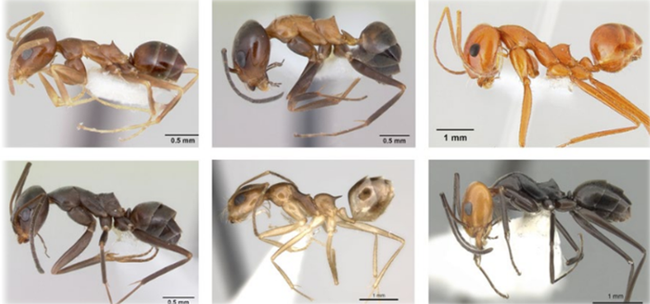
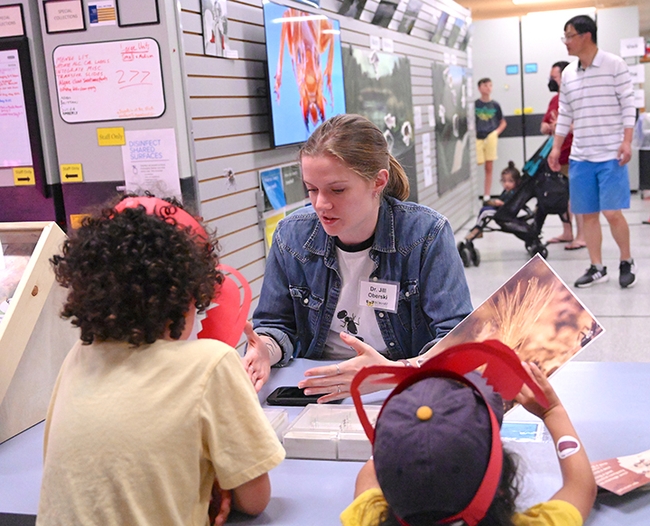
- Author: Kathy Keatley Garvey
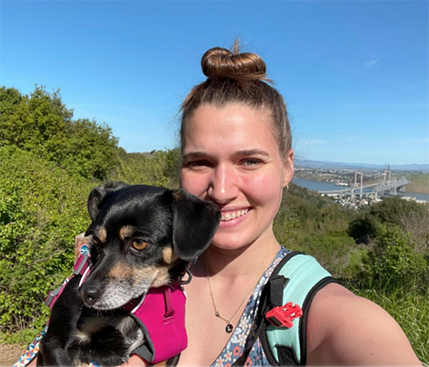
Infected Ae. aegypti mosquitoes can transmit dengue fever, chikungunya, Zika fever, Mayaro and yellow fever viruses, and other disease agents.
Mack will present her exit seminar on "Genetic and Molecular Factors Influencing Pyrethroid Response in Aedes aegypti from California" at 3:30 p.m., Tuesday, June 6 in 366 Briggs Hall. It also will be on Zoom.
Mack studies Ae. aegypti with a focus on analysis of transcriptomic datasets and 3D imaging datasets. "Throughout my time in graduate school, my projects have considered pyrethroid resistance in Ae. aegypti; examining the genetic response to this insecticide. As I finish up my dissertation, I hope to pursue a career in industry using the skills I've developed to continue to analyze large datasets!"
Insecticide resistance is a global issue, Mack says in her exit seminar abstract. The mosquito was first colonized California in 2013 and arrived resistant to pyrethroids. "The pyrethroid target site genotype differs geographically in California and partially infers resistance phenotype, indicating that other mechanisms are at play as well."
Mack is the co-lead author (with doctoral candidate Erin Taylor Kelly of the Attardo lab) of Frequency of Sodium Channel Genotypes and Association with Pyrethrum Knockdown Time in Populations of Californian Aedes aegypti, published in March 2021 in the journal Parasites and Vectors. The eight co-authors, in additioin to Attardo, included Anthony Cornel, Mosquito Control Research Laboratory, Kearney Agricultural Center, and Department of Entomology and Nematology.
"Since their detection in 2013, Aedes aegypti has become a widespread urban pest in California," the co-authors wrote in the abstract. "The availability of cryptic larval breeding sites in residential areas and resistance to insecticides pose significant challenges to control efforts. Resistance to pyrethroids is largely attributed to mutations in the voltage gated sodium channels (VGSC), the pyrethroid site of action. However, past studies have indicated that VGSC mutations may not be entirely predictive of the observed resistance phenotype."
"To investigate the frequencies of VGSC mutations and the relationship with pyrethroid insecticide resistance in California, we sampled Ae. aegypti from four locations in the Central Valley, and the Greater Los Angeles area. Mosquitoes from each location were subjected to an individual pyrethrum bottle bioassay to determine knockdown times. A subset of assayed mosquitoes from each location was then analyzed to determine the composition of 5 single nucleotide polymorphism (SNP) loci within the VGSC gene."
The conclusion:
"Resistance associated VGSC SNPs are prevalent, particularly in the Central Valley. Interestingly, among mosquitoes carrying all 4 resistance associated SNPs, we observe significant heterogeneity in bottle bioassay profiles suggesting that other mechanisms are important to the individual resistance of Ae. aegypti in California."
Mack, who holds a bachelor of science degree (2018) in biology from Creighton University, Omaha, Neb., enrolled in the UC Davis graduate school program in 2018.
Active in the Entomological Society of America, Mack scored second place in student competition at the 2022 joint meeting of the Entomological Societies of America, Canada, and British Columbia, held last November in Vancouver, British Columbia. She entered her presentation, "Three Dimensional Analysis of Vitellogenesis in Aedes aegypi Using Synchrotron X-Ray MicroCT,” in the category, "Graduate School Physiology, Biochemistry and Toxicology: Physiology.
Her abstract: "Traditional methods of viewing the internal anatomy of insects require some degree of tissue manipulation and/or destruction. Using synchrotron-based x-ray phase contrast microCT (pcMicroCT) avoids this issue and has the capability to produce high contrast, three dimensional images. Our lab is using this technique to study the morphological changes occurring in the mosquito Aedes aegypti during its reproductive cycle. Ae. aegypti is the primary global arbovirus vector, present on all continents except Antarctica. Their ability to spread these viruses is tightly linked with their ability to reproduce, as the production of eggs in this species is initiated by blood feeding. Amazingly, this species produces a full cohort of eggs (typically 50-100) in just 3 days' time following a blood meal. This rapid development represents dramatic shifts in physiological processes that result in massive volumetric changes to internal anatomy over time. To explore these changes thoroughly, a time course of microCT scans were completed over the vitellogenic period. This dataset provides a virtual representation of the volumetric, conformational, and positional changes occurring in tissues important for reproduction across the vitellogenic period. This dataset provides the field of vector biology with a detailed three-dimensional internal atlas of the processes of vitellogenesis in Ae. aegypti."
"As for career plans, I am applying to computational biology positions in industry," Mack said. "I'm not filing my dissertation until July so I am still working on this."
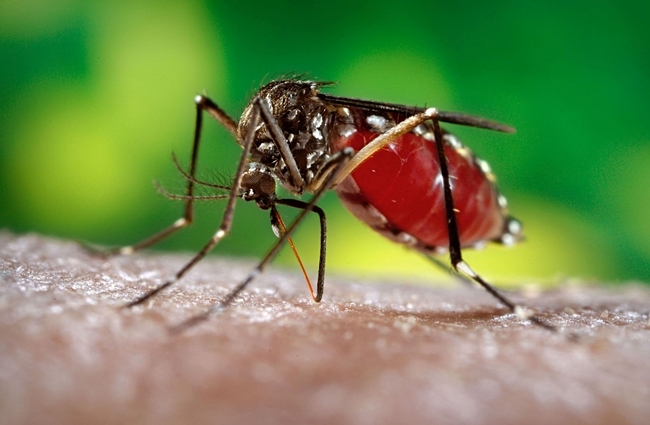
- Author: Kathy Keatley Garvey
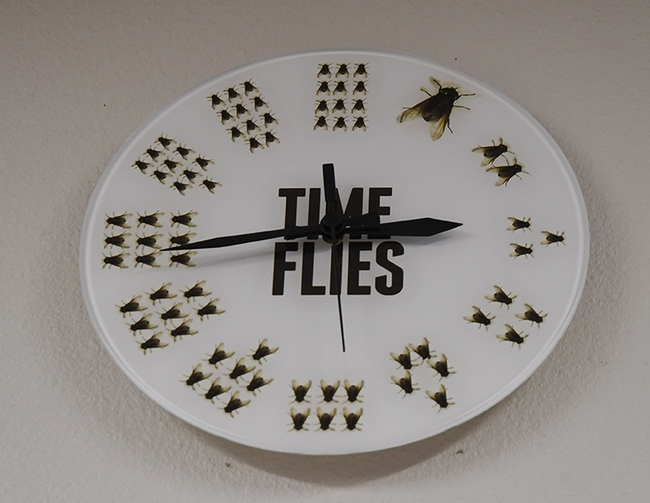
That was molecular geneticist Yao Cai, entertaining with several other members of the UC Davis Entomology Graduate Student Association (EGSA). He was dressed--quite appropriately, too--as a fruit fly, Drosophila melanogaster, which he described as “our favorite model organism in Insecta!” (See Bug Squad blog.)
Entomology Today, a publication of the Entomological Society of America, picked up the story, headlining it as "Bugs and Beats."
Now fast forward...past the two-year pandemic...and way over to 2022. Time flies, right?
Cai now holds a doctorate in entomology (as of September) and will present his exit seminar, "How Do Flies Tell the Time of Day?" at the next UC Davis Department of Entomology and Nematology seminar, set Wednesday, Oct. 26.
He will deliver his seminar both in-person and virtually at 4:10 p.m. in 122 Briggs Hall. The Zoom link:
https://ucdavis.zoom.us/j/95882849672.
Cai will be introduced by his major professor, molecular geneticist and physiologist Joanna Chiu, professor and vice chair of the department.
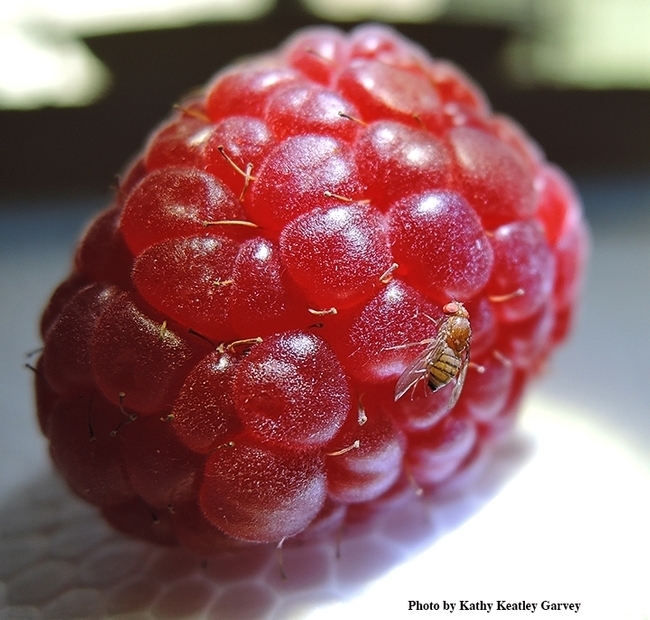
"This study highlights the importance of post-translational regulation of circadian rhythms," Cao noted. "Finally, together with previous studies in fungi and mammals, our results suggest a conserved feature in eukaryotic clocks by which transcriptional repressors recruit CK1s to modulate the activity of transcription activators."
A native of southeast Asia, Cai holds two degrees from China Agricultural University, Beijing: a bachelor of science degree (2014) in plant protection and a master's degree in entomology (2016).
What sparked his interest in entomology? "The insect world presented to me the diversity of species when I was a kid," he related. "Since then, I have wondered about the origin and evolution of species. I was lucky to cultivate my interest as an undergrad and then a master student in Chinese Agricultural University. As a PhD student in the Department of Entomology andNematology at UC Davis, this interest expanded to the cellular and molecular mechanisms of evolution and adaptation. Upon my graduation in summer 2022, I continued my postdoctoral research in the Chiu lab. I hope this will prepare me to become a professor in biological sciences."
Cai completed an International Chronobiology Summer School (virtual) in 2020 and a UC Davis Comprehensive Course in Flow Cytometry in 2019. His publications include:
- Cai YD*, Joshi R*, Xia Y, Chiu JC, Emery P (2022) PERIOD phosphoclusters control temperature compensation of the Drosophila circadian clock, Frontiers in Physiology. 13: 888262.
- Cai YD, Sotelo SH, Jackson K, Chiu JC (2022) Assaying circadian locomotor activity rhythm in Drosophila, in “Circadian Rhythms” in NeuroMethods series. ed. M. Hatori, T. Hirota, and S. Panda. Springer Nature, Switzerland.
-
Cai Y.D., Y. Xue, C. Truong, J. Del-Carmen Li, C. Ochoa, J.T. Vanselow, K.A. Murphy, Y.H. Li, X. Liu, B.L. Kunimoto, H. Zheng, C. Zhao, Y. Zhang, A. Schlosser, J.C. Chiu (2021). CK2 inhibits TIMELESS nuclear export and modulates CLOCK transcriptional activity to regulate circadian rhythms. Current Biology 31(3): 502-514.
- Cai, Y.D., J.C. Chiu (2021). Timeless in animal circadian clocks and beyond. FEBS Journal (Online ahead of print). doi: 10.1111/febs.16253.
-
Abrieux, A., Y. Xue, Y. Cai, K.M. Lewald, H.N. Nguyen, Y. Zhang, J.C. Chiu. (2020). EYES ABSENT and TIMELESS integrate photoperiodic and temperature cues to regulate seasonal physiology in Drosophila. Proceedings of the National Academy of Sciences. U.S.A. 117(26): 15293-15304.
Active in academics, Cai served as a guest lecturer for Entomology 102 on the "Insect Nervous System" and for Entomology 10 on "Insect Circadian Rhythm." He also served as a teaching assistant for a number of UC Davis classes, including Applications, Values, and Ethics in Animal Research; Insect Physiology; Introduction to Biology: Ecology and Evolution; Introduction to Biology: Cell Functions; and Calculus for Biology and Medicine. In addition, he has assisted at Bohart Museum of Entomology open houses and at science program provided by Peregrine School, Davis.
Honored with a number of awards, Cai received a 2021 Chinese Government Award for Outstanding Self-Finance Students Abroad; a 2021 UC Davis Entomology W. Harry Lange, Jr. Memorial Travel Fund; 2021 UC Davis Marv Kinsey Scholarship; a 2020 Boroughs Welcome Fund Society for Research on Biological Rhythms (SRBR) Excellence Award; a 2020 UC Davis Sean and Anne Duffey and Hugh and Geraldine Dingle Research Fellowship; a 2019 UC Davis McBeth Memorial Scholarship; and a 2018 and 2017 UC Davis Henry A. Jastro Graduate Research Awards, among others.
Emily Meineke, assistant professor of urban landscape entomology, UC Davis Department of Entomology and Nematology, coordinates the department's seminars for the 2022-23 academic year. All 11 seminars will take place both person and virtually at 4:10 p.m. on Wednesdays in Room 122 of Briggs Hall except for the Nov. 9th and Dec. 7th seminars, which will be virtual only, she said. (See list of seminars)
For further information on the seminars or to resolve any technical difficulties with Zoom, contact Meineke at ekmeineke@ucdavis.edu.
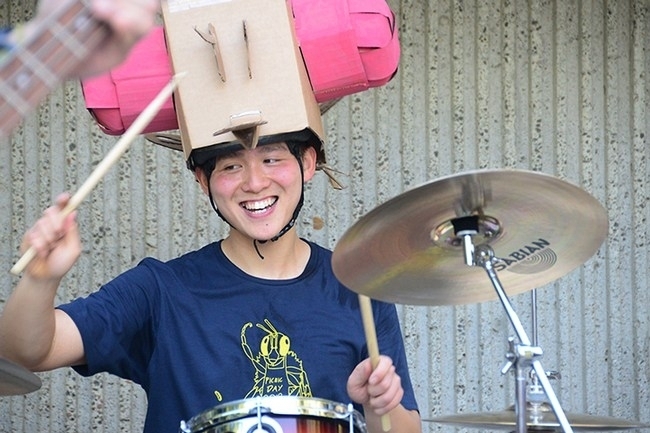
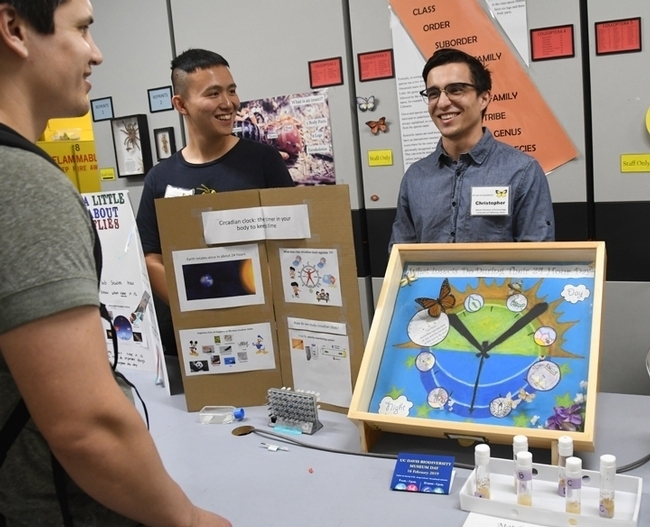
- Author: Kathy Keatley Garvey
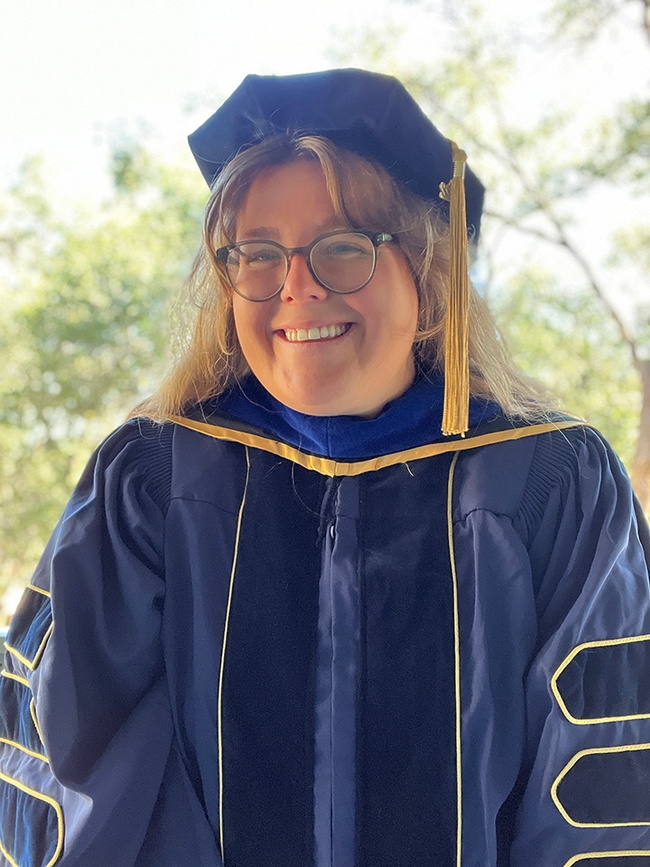
Winokur, a UC Davis doctoral candidate and vector-borne disease specialist who studies with major professor Chris Barker, will present her exit seminar, hosted by the UC Davis Department of Entomology and Nematology, at 4:10 p.m., Wednesday, Oct. 5 in 122 Briggs Hall.
She'll discuss "Temperature Drives Transmission of Mosquito-borne Pathogens: Improving Entomological Estimates for Aedes aegypti-borne Virus Transmission Risk." Her seminar will be both in-person and virtual. The Zoom link: https://ucdavis.zoom.us/j/95882849672.
"The mosquito Aedes aegypti is the primary vector of a range of viruses that cause a major burden on human health worldwide, including dengue, Zika, chikungunya, and yellow fever viruses," Winokur writes in her abstract. "As the Zika epidemic emerged in 2016, estimates for Zika risk were based on proxy evidence from closely related dengue virus. To improve risk estimates, we studied how temperature affects Zika virus extrinsic incubation period. We sought to further improve risk estimates by studying thermal preferences of Ae. aegypti mosquitoes in the laboratory and in the field. Current mosquito-borne pathogen risk models primarily use temperatures from weather stations or thermal imagery as a proxy for the temperatures mosquitoes experience, however such approaches do not account for local environments or microclimates available to adult mosquitoes. Taken together, the results of these studies can be used to improve prediction of mosquito-borne pathogen risk and inform mosquito control decisions." (See information on the mosquito on the California Department of Public Health website)
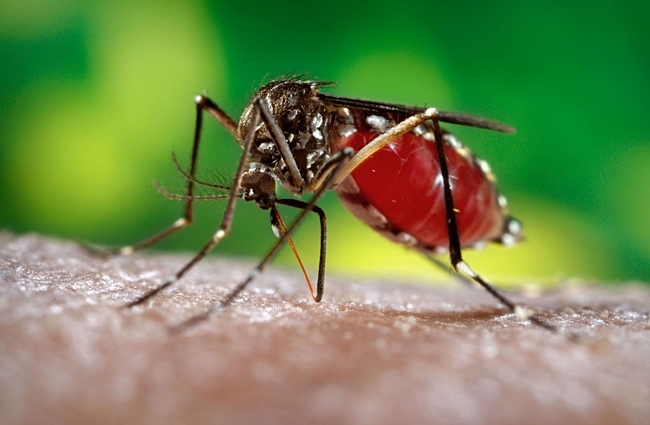
Olivia received her bachelor's degree in May of 2015 from Cornell University where she was an interdisciplinary studies major (environmental effects on human health).
At UC Davis, Winokur served as the 2019-2020 president of the Entomology Graduate Student Association and as a 2020-2022 committee member of the UC Davis Entomology Diversity, Equity, Inclusion, & Belonging. She co-founded the Girls' Outdoor Adventure in Leadership and Science (GOALS) in 2017 and continues to serve in leadership roles. GOALS is a free two-week summer science program for high school girls and gender expansive youth from backgrounds underrepresented in STEM fields. They learn science, outdoors skills, and leadership hands-on while backpacking in Sequoia National Park.

Active in the vector-borne disease community, Winokur completed a 2019-2020 term as the Executive Council student representative for the American Committee on Medical Entomology (ACME) and as a 2017-2019 volunteer with the Vector-Borne Disease Section of the California Department of Public Health, where she assisted with hantavirus and plague surveillance. She peer-reviews manuscripts for the Journal of Medical Entomology.
Winokur is the recipient of numerous fellowships and grants, including a $140,00 National Science Foundation Graduate Research Fellowship; a $30,000 Pacific Southwest Center of Excellence in Vector-Borne Diseases Graduate Fellowship; a $25,000 Pacific Southwest Center of Excellence in Vector-Borne Diseases Postdoctoral Fellowship; a Professors for the Future Fellowship (UC Davis) of $3,000; and two-consecutive Hazeltine Student Research Awards (UC Davis), totaling $5,500. She also received an American Geophysical Union Centennial Grant of $9,720 and an American Association for University Women Community Action Grant of $5,000 (outreach grants).
Winokur's latest peer-reviewed publications include co-authoring "The Influence of Vector-borne Disease on Human History: Socio-Ecological Mechanisms" in the journal Ecology Letters; and serving as the lead author of "Impact of Temperature on the Extrinsic Incubation Period of Zika Virus in Aedes aegypti in the journal PLOS (Public Library of Science): Neglected Tropical Diseases.
Emily Meineke, assistant professor of urban landscape entomology, UC Davis Department of Entomology and Nematology, coordinates the department's seminars for the 2022-23 academic year. All 11 seminars will take place both person and virtually at 4:10 p.m. on Wednesdays in Room 122 of Briggs Hall except for the Nov. 9th and Dec. 7th seminars, which will be virtual only, she said. (See list of seminars)
For further information on the seminars or technical difficulties with Zoom, contact Meineke at ekmeineke@ucdavis.edu.
